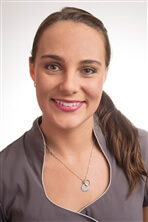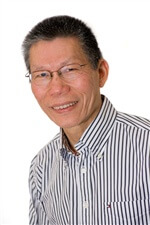LIPOSUCTION is also known as liposculture, lipocontouring, lipoplasty or suction lipectomy. (If the correct surgical technique is used these terms are synonymous). LIPOSUCTION is the removal of unwanted localized deposits of fat from specific areas of the body using specially designed suction equipment.
Many people have localized areas of fat which have not responded to traditional weight loss methods such as diet or exercise. These deposits develop for several reasons including familial, cultural or hormonal or most commonly a combination of these factors. Common areas of deposition vary between males and females.
Common areas of concern which can be treated:
In females – neck, abdomen, buttocks, thighs, hips, knees, calves, ankles, upper arms
In males – neck, abdomen, flanks, breasts
Fat cells are genetically pre-determined. This means that the effects of liposuction are permanent. However, if you gain weight after the procedure the remaining fat cells can increase in size.
Liposuction is not a weight-loss procedure or a treatment for obesity. It is not a substitute for diet and exercise. It is not a treatment for cellulite or stretch marks.
We will assess your condition and general health, and plan the treatment that is best suited to you.
Not everyone is suitable for liposuction.
Important factors determining your suitability for liposuction:
- good general health with firm elastic skin
- tried to eliminate bulges through diet, exercise & weight loss
- distinct areas of localized fat which are disproportionate to the rest of your body
- weight – normal or slightly to moderately overweight
- understand that liposuction is not a substitute for weight loss
- realistic expectations
The Procedure:
Whilst there are some technical variations, most surgeons use the “tumescent” technique. This involves infusing appropriate volumes of sterile saline, local anaesthetic and adrenaline into the area to be treated, before suction. This combination makes the fat easier to remove, constricts the blood vessels and therefore minimizes bleeding, and reduces discomfort both during and after the procedure. This technique has been practiced for several years and has significantly improved the safety and reduced the risks of liposuction.
After tumescent infiltration, a thin hollow tube called a cannula is inserted into the fatty region to be treated via tiny inconspicuous incisions. The cannula is attached to a specially designed suction machine. Under safe pressure the fat cells are extracted.
Liposuction is not simply “sucking out fat”. Most fatty deposits consist of a central “mound” which tapers towards the periphery. There are very important technical factors which will determine the final result. The outcome and result are determined by the technical experience and expertise of the surgeon. The bulk of the fat is removed evenly and then the area is “feathered” towards the periphery. This “feathering” is the “contouring” or “sculpting” aspect of the procedure. Most importantly, the surgeon must know how much fat to remove and how much to leave behind. If too much fat is removed the result can be very displeasing with obvious irregularities of the skin and deep tissues.
Light dressings are applied & a lycra pressure garment is fitted.
The procedure is usually carried out under general anaesthetic and local anaesthetic, in a fully accredited operating theatre. The time taken depends on the amount of fat to be removed.
After Surgery
- Liposuction is usually carried out as a day procedure.
- Some oozing of bloodstained fluid expected for 24 hours.
- Moderate discomfort expected over the first 24 – 48 hours, subsiding over the week – relieved by oral painkillers.
- Moderate swelling & mild bruising.
- Rest – with regular light activity – is recommended for the first few days after surgery.
- Resumption of normal daily activities over 1 – 2 weeks
- Exercise as tolerated is encouraged after 2 weeks
- Pressure garment must be worn for several weeks.
- Lymphatic massage advised along with local massage of areas treated.
- Return to work depends on the type of work you do, and varies from 1 to 6 weeks
- Post-operative follow-up routinely consists of 3 – 6 further appointments over a 6 – 12 month period
FINAL RESULT WILL NOT BE SEEN FOR 3 – 6 MONTHS
If you are considering liposuction we can certainly guide and advise you. We want your new shape to be as attractive and appropriate for you as possible. All cosmetic procedures have limitations. Therefore, if for any reason we feel that we are unable to fulfill your expectations we will tell you immediately. We look forward to meeting with you to discuss this procedure.








let's be friends